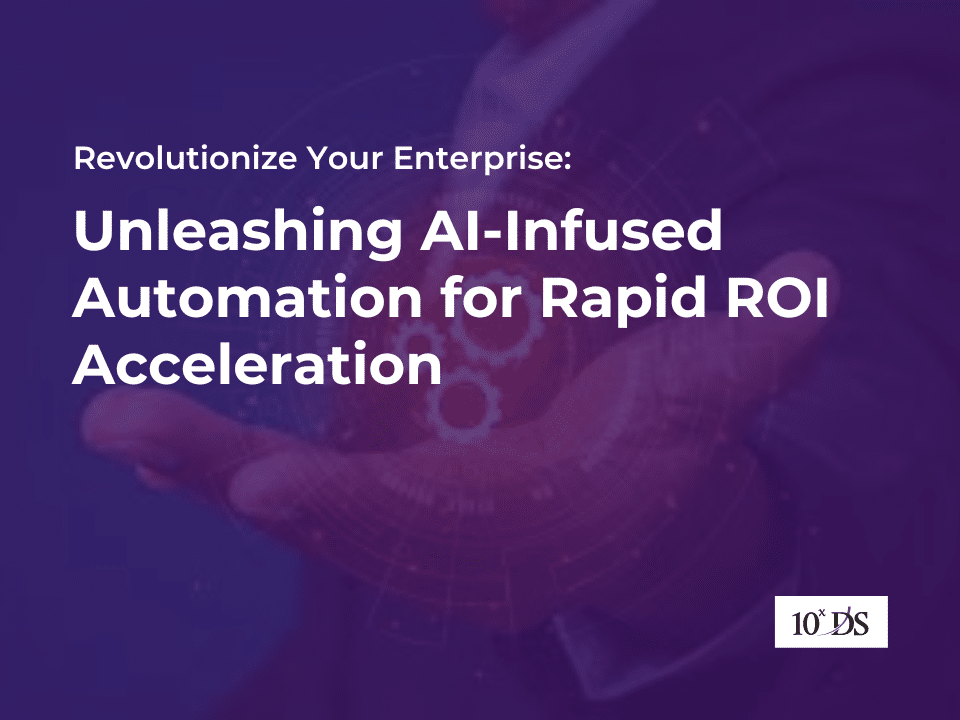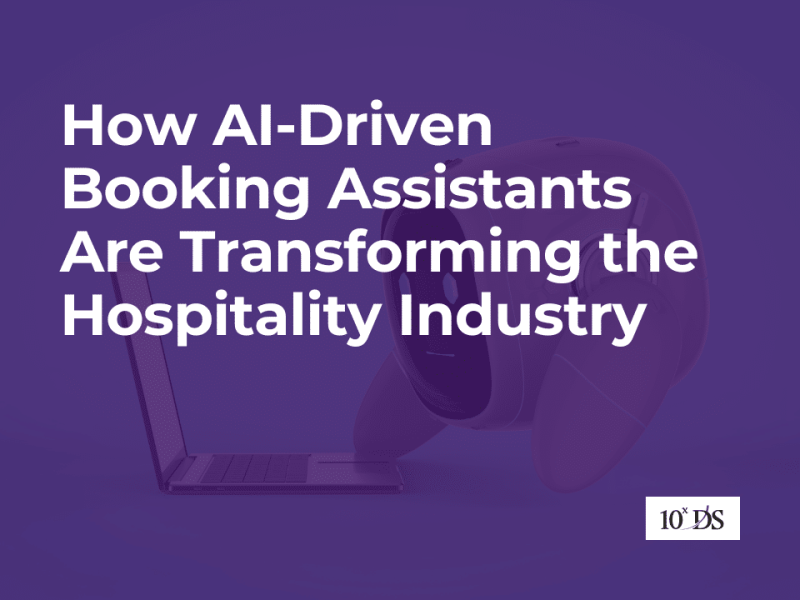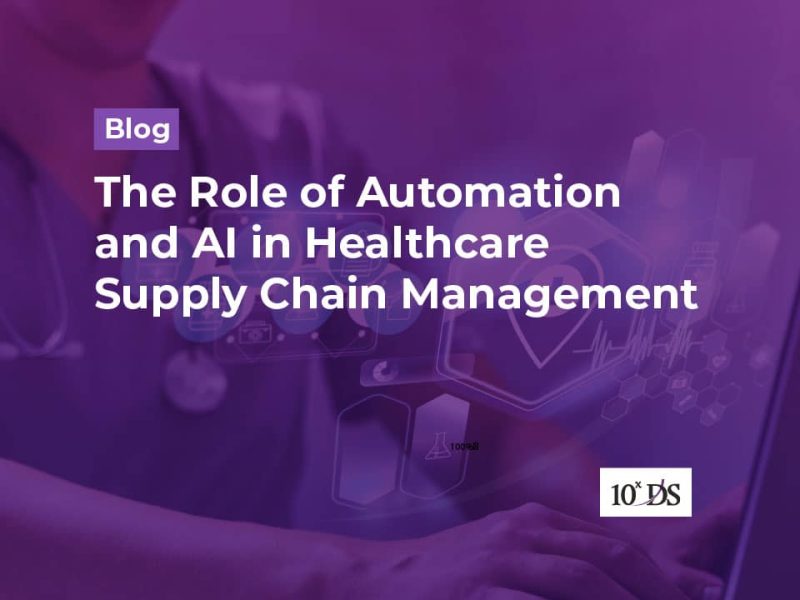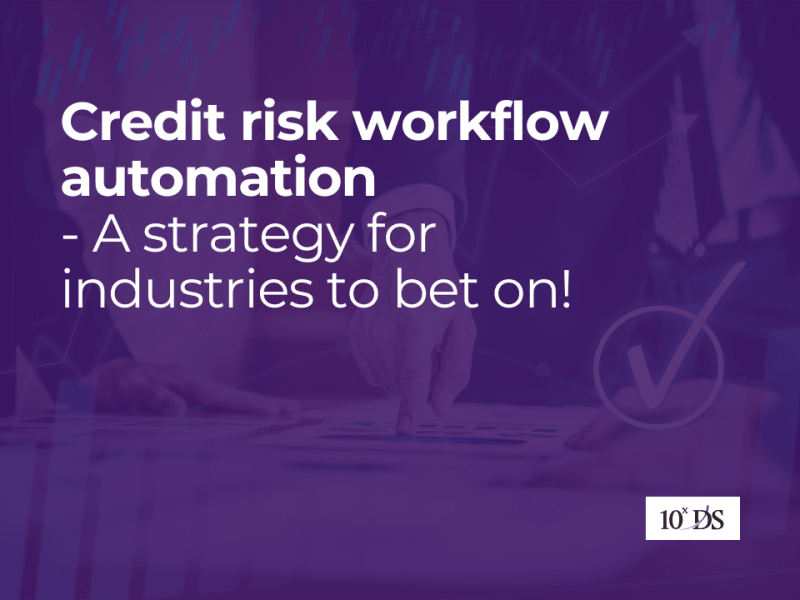
Revolutionize Your Enterprise: Unleashing AI-Infused Automation for Rapid ROI Acceleration
According to a forecast by Gartner, the global IT spending was expected to reach $4.1 trillion in 2024, up from $3.7 trillion in 2022, with enterprise software, devices, and IT services being the fastest-growing segments. When the investment is high, the need to scrutinize Return on Investment (ROI) has become paramount, particularly in the realm of automation and artificial intelligence (AI). As organizations navigate the complexities of a digital era, strategic investments in technologies like automation and AI hold immense promise for enhancing efficiency, reducing costs, and fostering innovation. However, with innovation comes the responsibility to evaluate the tangible benefits and financial outcomes these technologies bring to the table. Understanding the ROI not only serves as a critical metric for gauging the success of technology investments but also guides businesses in making informed decisions, ensuring that every technological stride aligns with overarching business objectives and contributes significantly to sustainable growth and competitiveness.
Maximizing the return on investment (ROI) from automation, especially when incorporating AI, involves careful planning, implementation, and ongoing optimization. Here’s a step-by-step guide.
Define Clear Objectives
Clearly outline the goals you want to achieve through automation and AI. Whether it’s improving efficiency, reducing costs, enhancing customer experience, or increasing revenue, having specific objectives will guide your implementation strategy.
Conduct a Process Analysis
Identify the processes that can benefit the most from automation and AI. Assess their complexity, frequency, and impact on overall business performance. Focus on processes that are time-consuming, error-prone, or resource-intensive.
Select the Right Technologies
Choose AI technologies that align with your business goals and the nature of the processes you’re automating. This may include machine learning, natural language processing, computer vision, or predictive analytics. Ensure the selected technologies integrate seamlessly with your existing systems.
Pilot Programs
Start with small-scale pilot programs to test the effectiveness of automation and AI in specific processes. This allows you to identify potential challenges, refine your approach, and demonstrate tangible results to stakeholders.
ROI Measurement Metrics
Establish key performance indicators (KPIs) and metrics to measure the success of your automation initiatives. These may include cost savings, process cycle time reduction, error rate reduction, improved customer satisfaction, or revenue growth.
Cost-Benefit Analysis
Conduct a thorough cost-benefit analysis to quantify the investment required for automation and AI implementation against the expected returns. Consider not only direct costs but also factors like increased productivity and business agility.
Employee Training and Involvement
Provide training for employees affected by the automation processes. Involving them in the transition and highlighting the benefits of automation can lead to smoother implementation and improved acceptance.
Iterative Improvement
Implement automation and AI in iterative phases, allowing for continuous improvement. Regularly analyze performance data, gather feedback, and make adjustments to enhance efficiency and address any emerging challenges.
Scale Gradually
Once successful outcomes are observed in pilot programs, scale up the automation efforts gradually. Ensure that scalability is feasible without compromising performance or introducing new risks.
Continuous Monitoring and Maintenance
Implement robust monitoring systems to track the performance of automated processes. Regularly evaluate system health, address issues promptly, and ensure that the automation remains aligned with evolving business needs.
Adaptability to Change
Design automation systems with adaptability in mind. As business requirements evolve, the automation framework should be flexible enough to accommodate changes without significant disruption.
Benchmarking
Compare your automation and AI performance against industry benchmarks. This can provide insights into areas where further optimization is possible and help you stay competitive.
Let’s try to explore the transformation of Financial Processes through the integration of Automation and AI and how it has to be looked for maximizing the ROI. Traditional financial processes involve manual handling of tasks such as invoice processing, expense management, and financial reporting. These processes can be time-consuming, error-prone, and may lack real-time insights.
Invoice Processing Automation
AI based Intelligent Document Processing (IDP) technology can extract relevant information from invoices automatically. Automation tools validate the accuracy of the data and route the invoices through the approval workflow, reducing processing time and minimizing errors.
Expense Management
AI-powered tools can streamline expense management by automatically categorizing expenses, verifying receipts, and flagging potential policy violations. This automation not only saves time for employees but also ensures compliance with company policies.
Predictive Analytics for Financial Planning
AI algorithms analyze historical financial data and market trends to provide accurate predictions for budgeting and financial planning. This enables businesses to make informed decisions about resource allocation, investment strategies, and risk management.
Automated Financial Reporting
Automation tools can generate financial reports automatically by pulling data from various sources. AI can analyze the data to identify trends, anomalies, and key performance indicators, providing stakeholders with timely and insightful reports.
Fraud Detection and Risk Management
AI is used for real-time fraud detection by analyzing transaction patterns, identifying anomalies, and flagging potentially fraudulent activities. Automation allows for immediate response to mitigate risks and protect financial assets.
Credit Scoring and Loan Approval
AI assesses creditworthiness by analyzing a variety of data points, including credit history, financial transactions, and even social media behavior. Automation expedites the loan approval process, providing quicker access to funds for individuals and businesses.
Automated Reconciliation
AI-driven reconciliation tools match financial transactions, identify discrepancies, and automatically reconcile accounts. This reduces the risk of errors and ensures accurate financial records.
Compliance Management
Automation helps businesses stay compliant with changing financial regulations. AI algorithms can monitor regulatory changes, assess the impact on financial processes, and ensure that financial practices align with legal requirements.
In conclusion, the dynamic duo of AI and automation emerges not just as a technological integration but as a transformative force that reshapes the landscape of efficiency and innovation. Together, they create a synergy that propels businesses into the future, streamlining processes, enhancing decision-making, and ultimately accelerating the journey towards a more agile and competitive landscape. As we navigate this era of technological evolution, the partnership of AI and automation stands as a testament to the boundless possibilities that arise when human ingenuity converges with intelligent automation. It’s not just about embracing technology; it’s about embracing a new era of possibilities, where the sum is truly greater than its parts, and businesses can thrive in the realm of unprecedented efficiency, returns and advancement.
Talk to our Experts to learn more.


